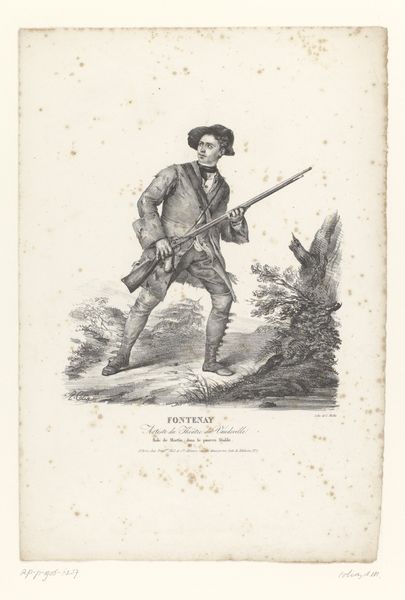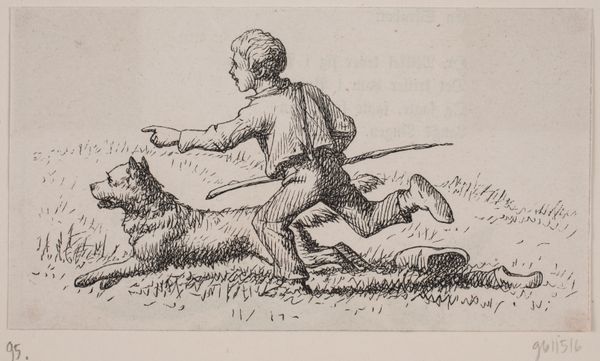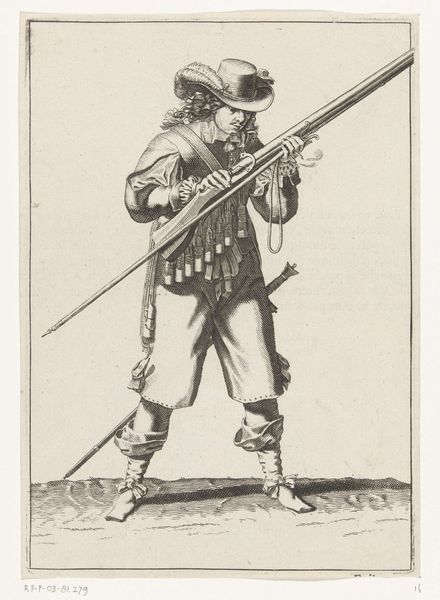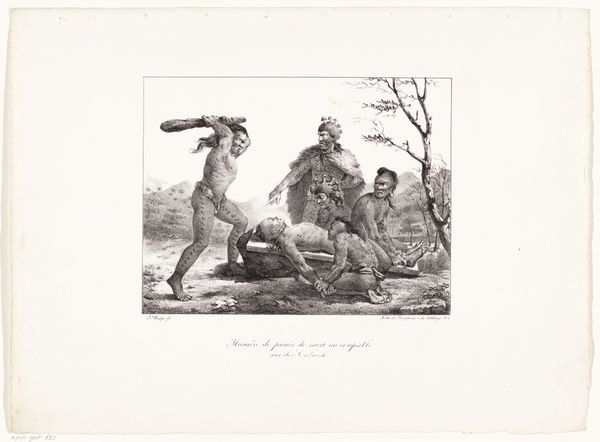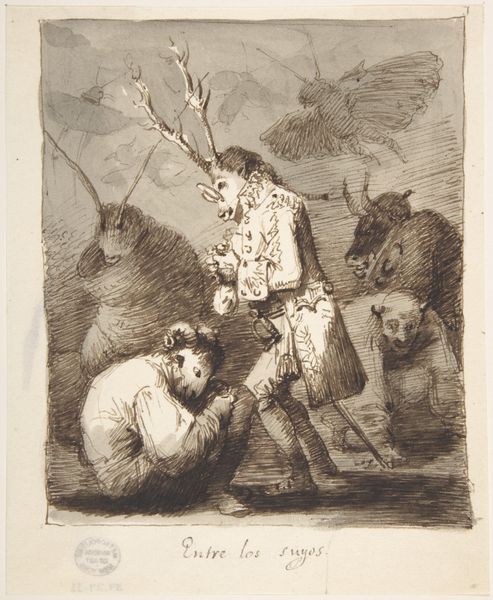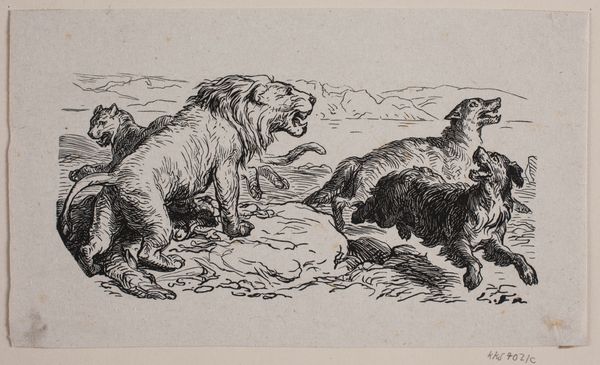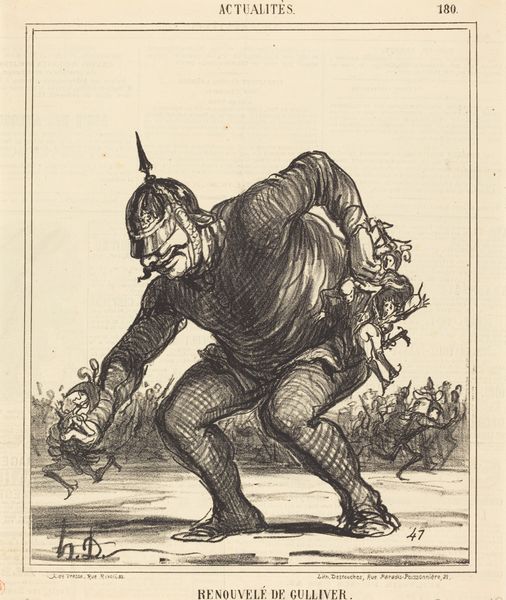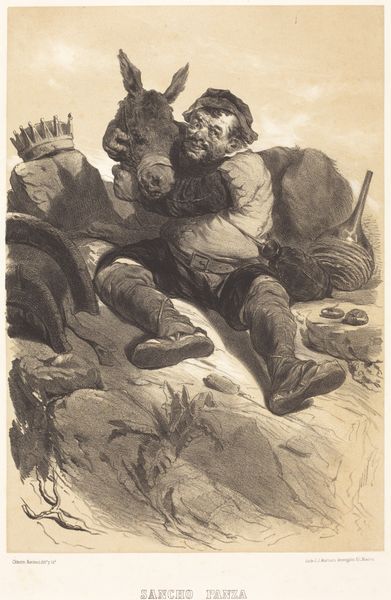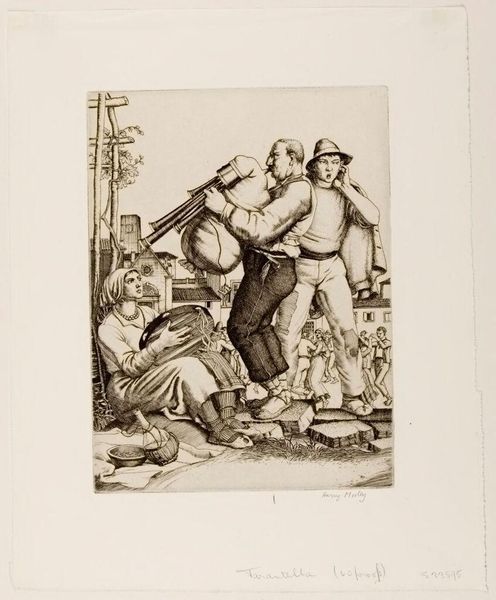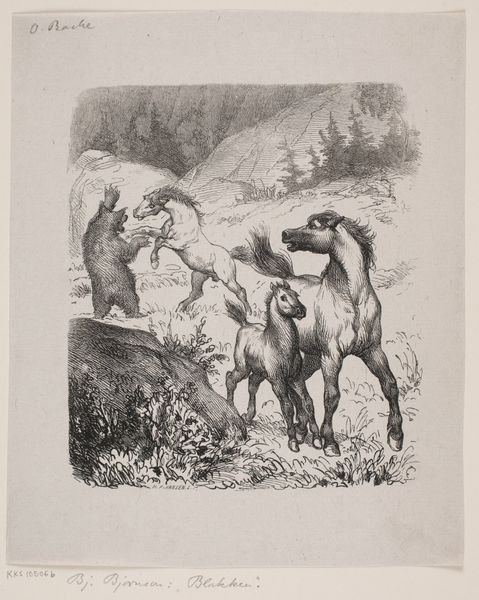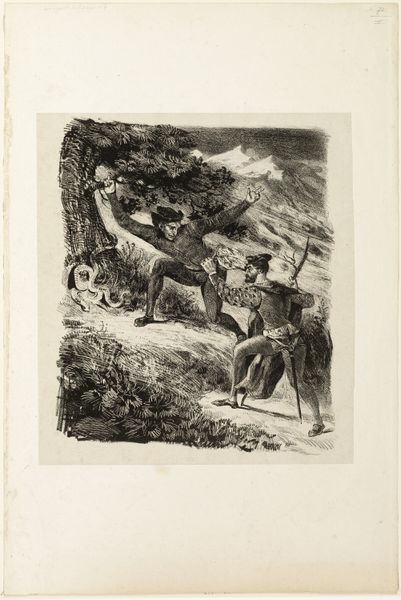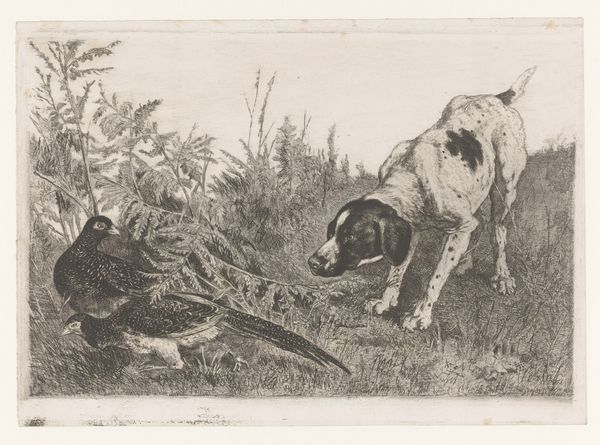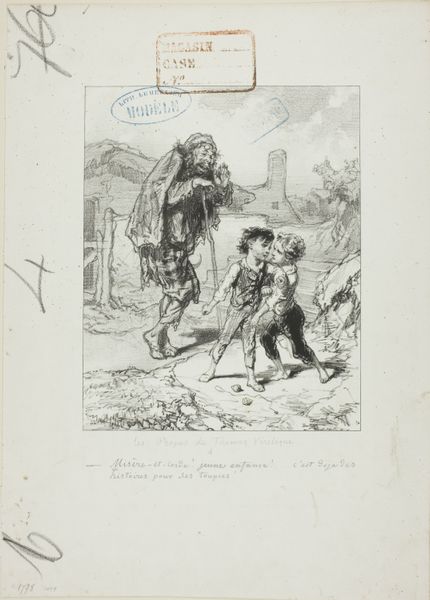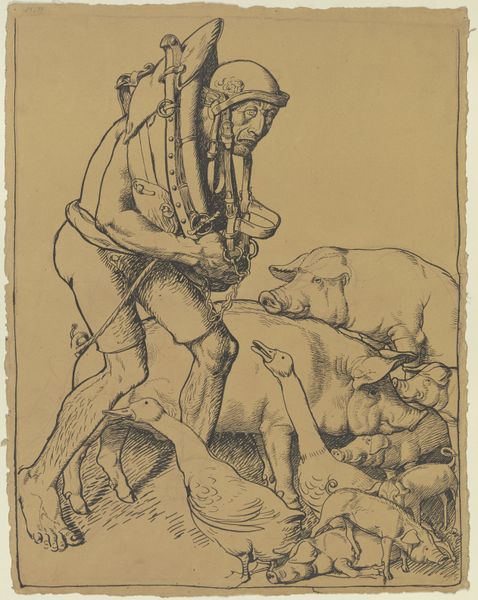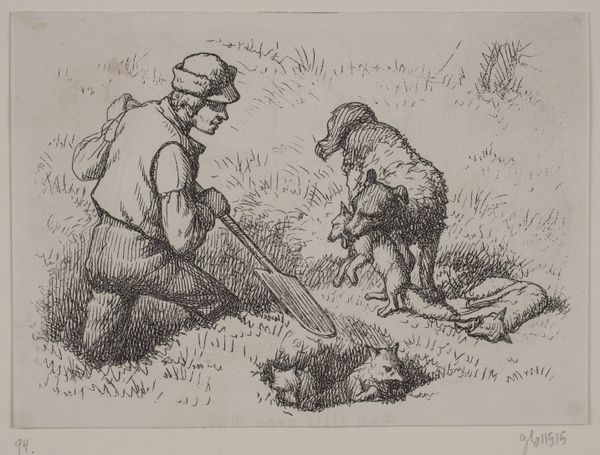
drawing, coloured-pencil, watercolor
#
drawing
#
coloured-pencil
#
figuration
#
watercolor
#
coloured pencil
#
folk-art
#
watercolour illustration
Dimensions: overall: 30.5 x 34.4 cm (12 x 13 9/16 in.) Original IAD Object: 7 3/4" high; 10 1/2" long; 2 7/8" wide
Copyright: National Gallery of Art: CC0 1.0
Curator: Here we have Archie Thompson’s “Toy Bank,” circa 1941, a watercolor and colored pencil drawing. What strikes you about this image? Editor: There's a fascinating sense of stillness. A toy Native American figure is aiming a rifle directly at a toy bear. It's unsettling and feels almost frozen in time. Curator: Considering its production era, think of the raw materials employed. During wartime, access to materials became a critical concern, shaping creative outputs considerably. This drawing uses watercolor and colored pencils. It gives us insight into available materials and artistic practices during that period, before being displaced. Editor: That's interesting. So it's not just *what* is represented, but the actual stuff of the image – its pigment, its paper – tells a story about wartime austerity, perhaps. I wonder, though, about the object itself. This image of a toy bank feels laden with cultural baggage, particularly the depiction of Indigenous peoples. Curator: Indeed. The composition hints at the socio-political climate in which this work appeared; depictions such as this bank often served specific ideological and financial aims in early- to mid-20th century America, aimed at specific consumer bases. Editor: The figures themselves, while simplistic, offer a complex commentary on American history and myth-making. We have a stereotypical Native American figure poised to shoot what looks like a grizzly bear, and a potential layering of perceived conflicts between man and nature as well as Native Americans and white settlers. How would this have been marketed or consumed, do you think? Curator: That's an important question. Toys frequently work as teaching tools. This probably offered the public reinforcement of certain assumptions. I'd even suggest the bank form, used to safeguard wealth, can reveal insight regarding broader attitudes towards consumption and accumulation. Editor: Looking at this again, I’m struck by the unsettling tension it conveys—a toy bank intended for children. Thank you for giving me a new historical perspective on this. Curator: It also shows the layered complexity of these everyday, "folk" artworks; this object speaks volumes about artistic mediums and material cultures intertwined. Thank you for illuminating this with cultural insights.
Comments
No comments
Be the first to comment and join the conversation on the ultimate creative platform.
